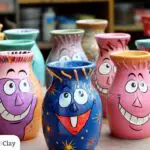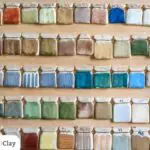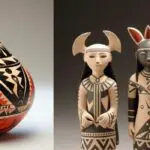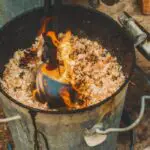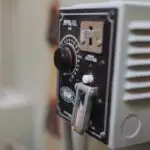The Mayans made marvels. Millions of tourists each year travel to Mexico and El Salvador to see incredible stone pyramids like Chichen Itza and wonder at the achievement in ancient times.
An incredible feat like the pyramids begs the question: What else did Maya craftsmen make?
A civilization can’t become rich, powerful, and last 3,000 years without making amazing pottery. So let’s get into it pottery nerds. In this article, we’ll cover:
- the history of Mayan ceramics
- Ancient Mayan pottery creation methods
- and the significance to the Mayans of their ceramic vessels
A brief history of Maya pottery
The earliest settlements of the ancient Mayans date around 1800 B.C. Early Maya was an agrarian culture. And the fertile Yucatan Peninsula (modern-day southern Mexico) aided the Mayans in becoming a powerhouse for the next 3,000 years in ancient Mesoamerica.
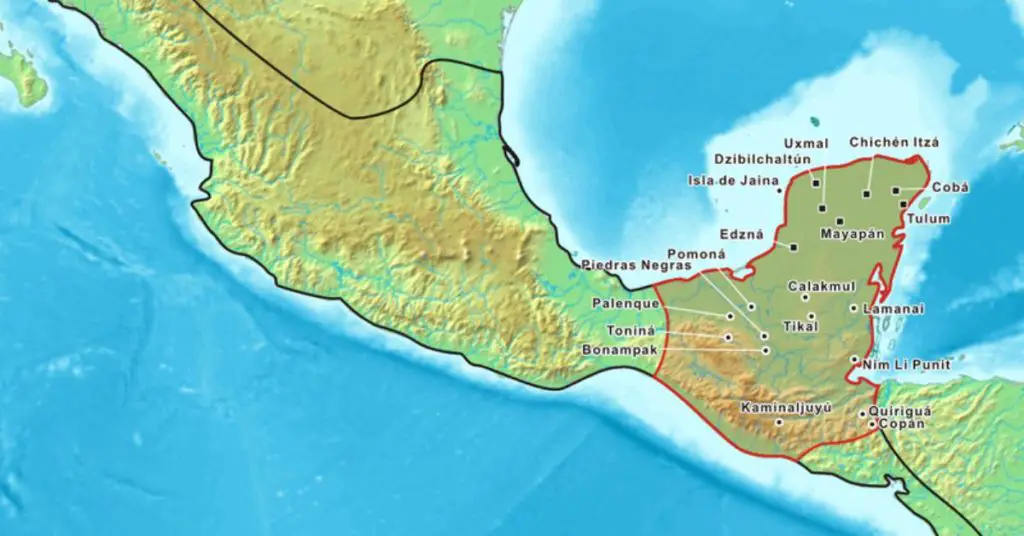
Over those 3,000 years, the Mayans perfected stone architecture, made strides in mathematics, charted the stars in astronomy, developed organized sports, and created incredible artworks.
Whew… they did a lot. But in this article, we’ll be looking at Mayan art. And since pottery sticks around long after a civilization’s collapse, we have quite a bit to check out.
Earliest recorded Maya ceramics
Archaeologists date the earliest Mayan pots to 900 B.C. or nearly 3,000 years ago. These early pots were for utilitarian purposes. Think bowls, vases, and plates for storing foods and liquids, carrying items, and serving at meal times. Before the Maya civilization developed, the peoples of the area would hollow out vegetable gourds to carry grains and liquids. So naturally, early ceramic vessels mimicked the gourd shape.
Popular period for Mayan pottery
The Mayans hit a stride in what archeologists call the Early and Late Classic period. The pottery from this time period far exceeded their first ceramics. Polychrome painting (which has become synonymous with Mayan pottery for many) was developed and honed during these two periods. The style requires a highly trained, highly skilled artist to detail the hieroglyphs and depictions of scenes. (We’ll get more into polychrome painting later in this article.)
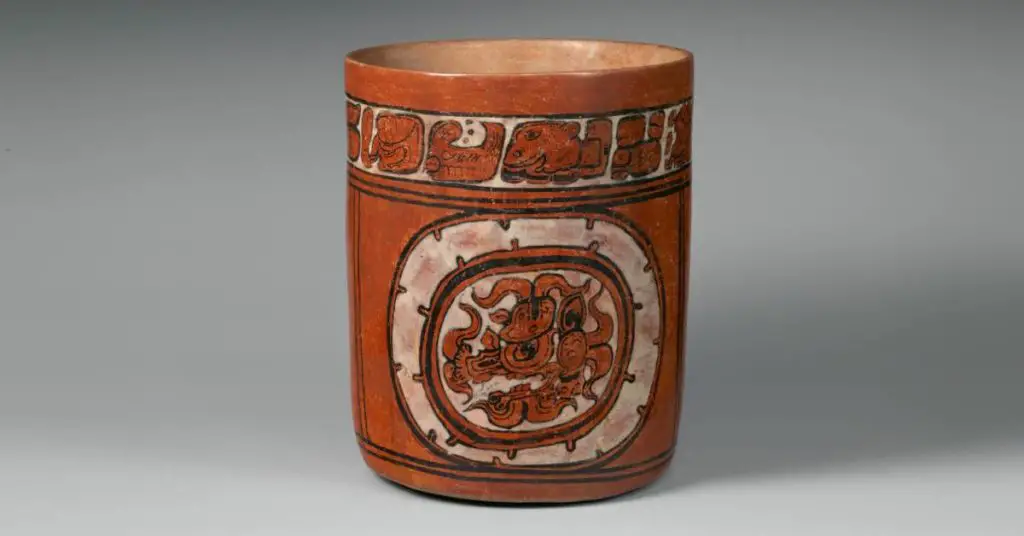
Palenque: Maya’s art capital
Many historians have taken to calling Palenque the art capital of the Mayan empire since advanced artworks have been discovered in the ruins of the city. Unlike other powerful empires, Palenque doesn’t appear to be a uniquely rich or big city. But even the city’s structures boasted art with stucco sculpture (perfected in the Early Classic Period) and carvings with high reliefs.
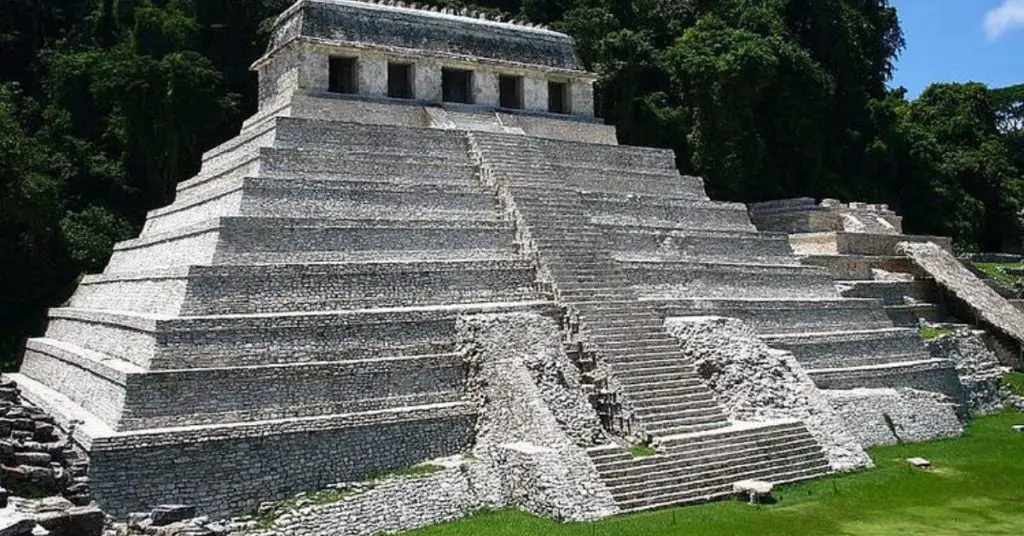
how did the ancient Mayans make pottery?
Pottery techniques of Maya artists
A wheel wasn’t used for most pottery made by the Mayans. Instead, the Mayans handbuilt their ceramics with techniques like pinch pots, coiled pots, and slab building.
Unlike most civilizations we’ve looked at, the Mayan people didn’t progress from handbuilding techniques to a potter’s wheel. The missing pottery wheel probably explains why no big pottery-producing operations developed while the Mayans were in power.
At some point, a wooden disk similar to a potter’s wheel was introduced called a k’abal. The device would rest on a board between the potter’s feet and would then be spun. But a modern potter wouldn’t recognize the device as a wheel like the ones you find in a studio.
It wasn’t just pottery wheels that were missing from Mayan culture, but wheels generally weren’t common in daily life. Many historians and archeologists speculate why this is the case. Most cite that there weren’t animals suitable for wheeled vehicles, so the Maya people didn’t have the need like so many other cultures.
What kind of Clay did Mayan Potters use?
As a potter, you know that the clay you use often defines the work you produce. We can deduce that the Mayan potter largely made works out of earthenware clay because clay was commonly mined from river banks. The pieces archeologists dig up have a high concentration of limestone and volcanic ash.
Palygorskite clay is known widely as “Maya blue” and was a source of riches, diplomatic peace talks, and religious rituals. The clay can be processed into a pigment that is then used as a dye. The color was sought after by the aristocratic class and foreign powers.
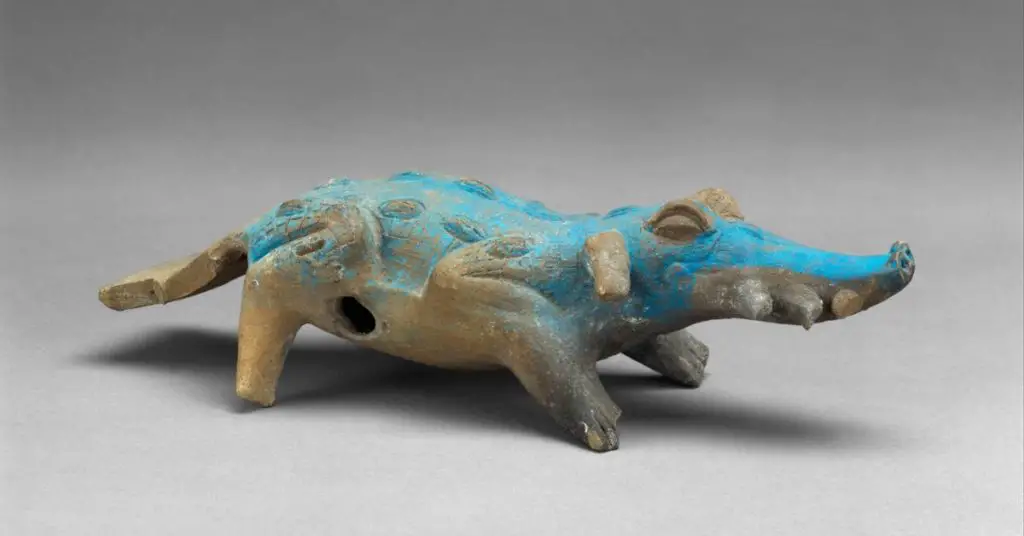
kilns or firing
Mayans used mostly open-air kilns that were most often pits in the ground. The to-be-fired pottery would be placed on blocks with the fuel source underneath. Often, the pit would have a “stoke hole” that allows the kiln attendant to keep the fuel source running at high heat.
Fuel sources in the Mayan days would have been natural resources like wood or charcoal.
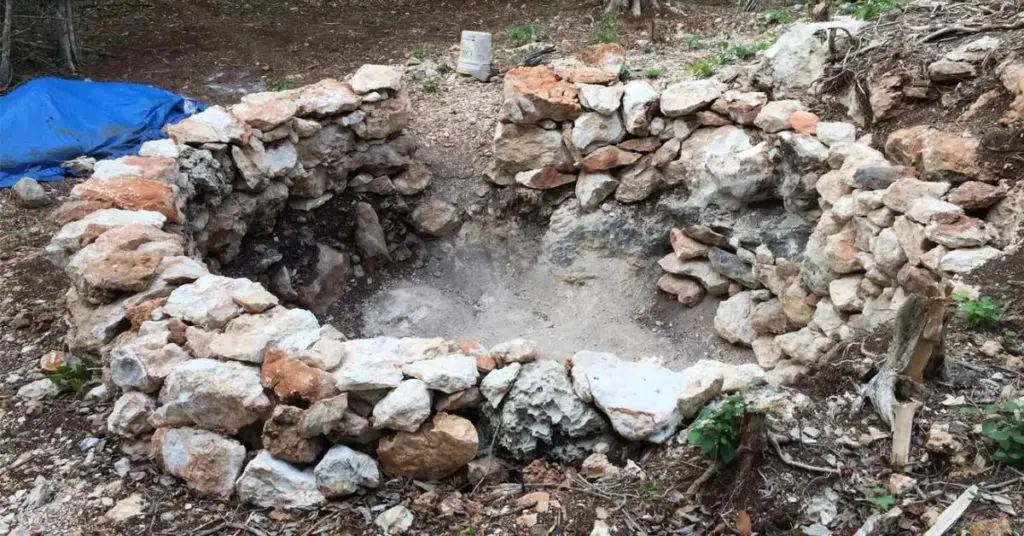
What kind of pottery did the Maya people make?
Pottery first and foremost plays a practical role in everyday life. In the early days, the Mayan people made pots, plates, jugs, and containers that stored things vital to keeping them alive (AKA food and fluids). The wares of the early days served the agrarian culture.
But with the rise of power and prestige, the Mayan people become prolific artisans. So let’s focus on some of the key ways ceramics played a role in ancient life outside of holding food and water.
Ritual uses of pottery
Much of life revolved around the spiritual in the Maya culture. And pottery played a few roles in the spiritual life of the Mayans.
One of the more gruesome aspects of the Mayan empire was their regular use of human sacrifice. The sacrifices were counterparts to prayers for rain and good harvests. In the ritual, a prisoner of war would be killed and their blood would be ceremonially spilled. Decorative vessels were often used to catch the blood so that a Maya priest could properly present it as a sacrifice to the appropriate gods.
Archeologists have discovered broken pottery in Mayan religious and sacred ruins. As practicing animists, the Mayans believed objects and creatures alike had souls. Some Mayan undertook pilgrimages to holy places. The pilgrims would then break pottery in the holy place. Once the containers were broken, the essence of the piece was released as an offering. The pilgrim would then collect a piece of the broken object to keep with them.
Using pottery to tell stories
Beyond religious practices, pottery was often a means of sharing and preserving stories for future generations. Glyphs would detail everything from religious texts to songs. Many pots visually captured scenes of big political events or more everyday happenings of the ruling class.
Popular designs and styles
Polychrome pottery
Mayan potters are most famous for a type of decoration called polychrome pottery. The decoration technique uses 3 or more mineral slips of varying color. The different colors give the potter opportunities to add depth or contrast to their designs.
Potters paint the slip on the surface portraying the scene. Or a potter might apply the slip and then incise the design into the piece revealing the color underneath (similar to how the Ancient Greeks made black-figure pottery).
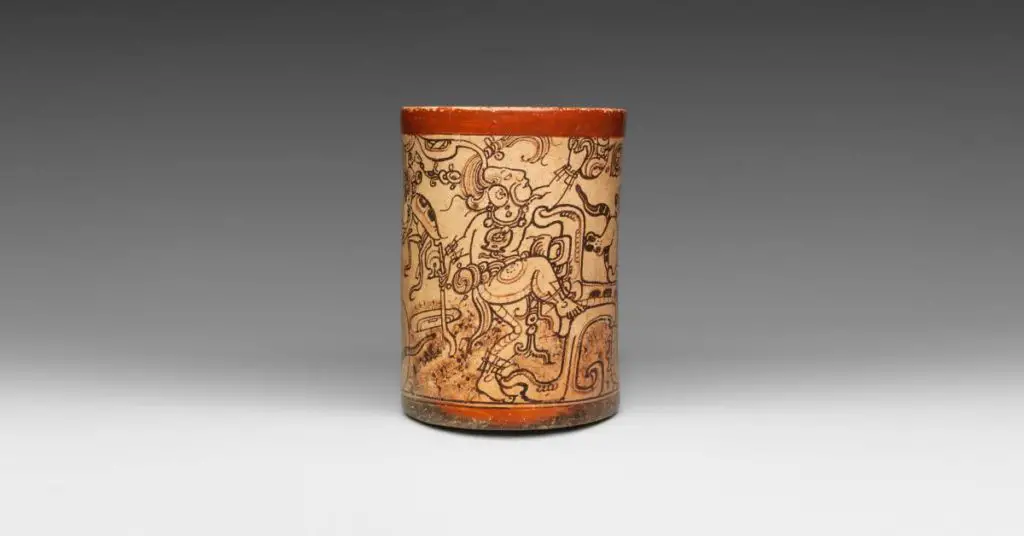
Figurines and Effigies
Small carved ceramic figurines are common discoveries in each archeological digs on the Yucatan Peninsula. Below I have featured two that I thought were really cool and share a little about Mayan culture outside of pottery.
Double Whistle – Met Museum of Art
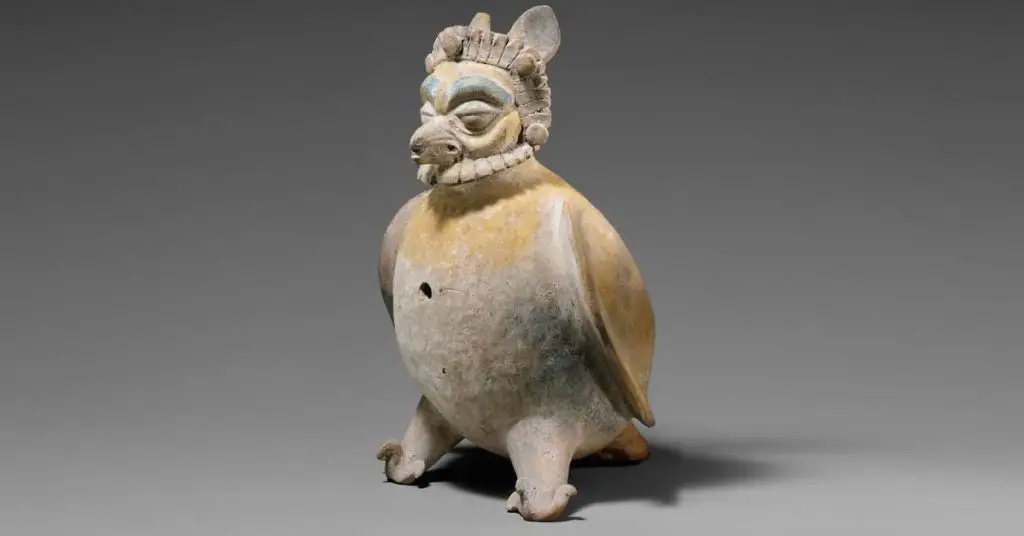
“This pottery whistle is in the form of a bird standing on two legs and a tail. It is a double whistle, with two internal and separate sounding chambers. The lower chamber, located in the body of the bird, is sounded through a mouthpiece located in the tail. This chamber has a single finger hole on the front of the bird’s belly allowing for two pitches to be produced. A second, smaller, chamber is found in the head of the bird and is activated through a mouthpiece protruding from behind the ears.”
metmuseum.org
Censor, Seated King – Met Museum of Art
Incense burners were common ritualistic objects. this burner “depicts a Maya ruler wearing a large, elaborate headdress and jewelry assemblage [metmuseum.org].”
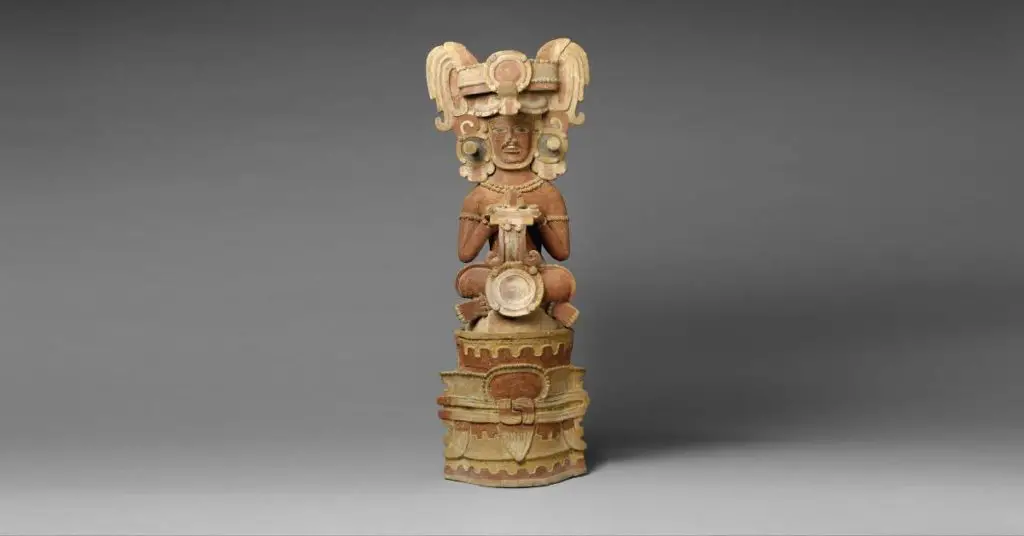
Conclusion
The ancient Mayan people are a mystery still being unraveled today. And as more is discovered about the people and their culture, more is discovered about Mayan pottery and its important role in everyday life. I hope you enjoyed learning a bit of history and how/what pottery was made in ancient Mayan times.
Want to learn more about the Mayans? I really enjoyed this 45 minute piece from National Geographic.
If you have any questions or comments, please email us at hello@wheelandclay.com. We’d love to hear from you!
Related articles
Did you enjoy learning about the Mayans through the lens of pottery? Good news! We have more articles like this on other cultures. Check them out at the links below.
A Crash Course on Ancient Pottery Cultures
A guide to ancestral Pueblo pottery
9 Navajo pottery designs you’ll want to check out
A guide to ancient Aztec pottery
A guide to ancient Egyptian pottery

